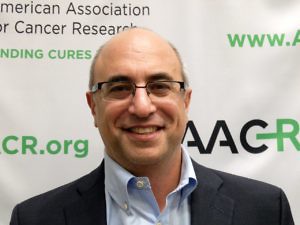Things we need to think about ahead of ASCO17
We are finally at the end of our AACR 2017 post meeting analysis and coverage with the final interview from Washington DC on deck. Timely wise, it’s actually quite a relevant one given the news last week on mixed results with clinical trials involving checkpoint blockade.

Dr Jeff Engelman AACR17
Just as we learned that immunotherapy agents can stop working over time, as well as the majority of patients don’t respond at all to begin with, there are concerted research efforts ongoing by both academia and industry to explore mechanisms of immune escape, resistance and modulating the tumour microenvironment.
Here we explore the intersection of targeted therapy-IO combinations, resistance and immune escape, transcription factors and other interesting new areas of development.
Also included is commentary from a leading KOL, which is NOT available on the recent Novel Targets podcast episode on overcoming immunotherapy resistance – readers should check that out first before reading this article, as this is more advanced.
Subscribers can login to read our latest industry expert interview
This content is restricted to subscribers
 As attention on neoantigens increases, what is Gritstone’s strategy and where could they fit into the cancer immunotherapy landcaspe?
As attention on neoantigens increases, what is Gritstone’s strategy and where could they fit into the cancer immunotherapy landcaspe? At the recent 2017 American Association for Cancer Research (AACR) annual meeting, Dr Whiteside gave two fascinating talks in education symposia. Afterwards, she kindly spoke to BSB about her research.
At the recent 2017 American Association for Cancer Research (AACR) annual meeting, Dr Whiteside gave two fascinating talks in education symposia. Afterwards, she kindly spoke to BSB about her research.
 After yesterday’s
After yesterday’s 